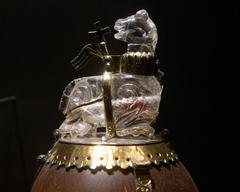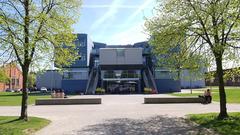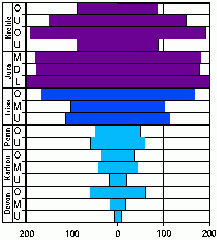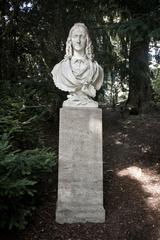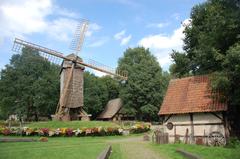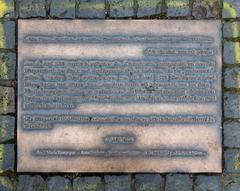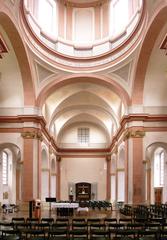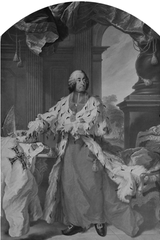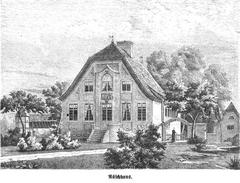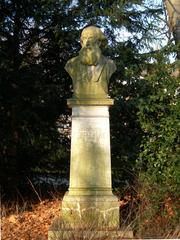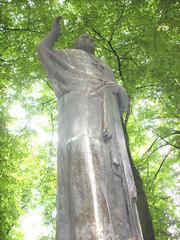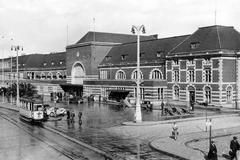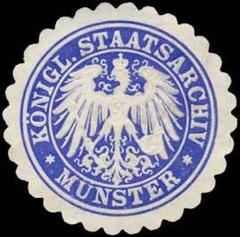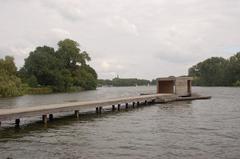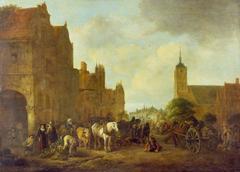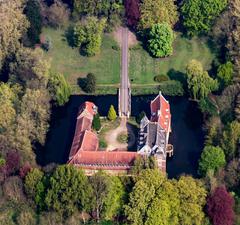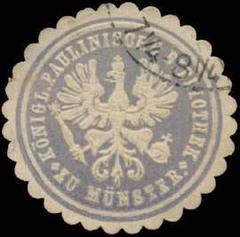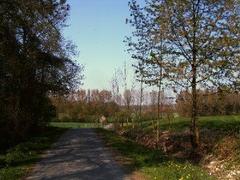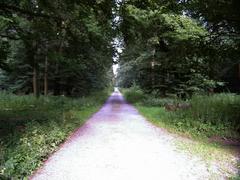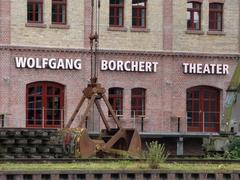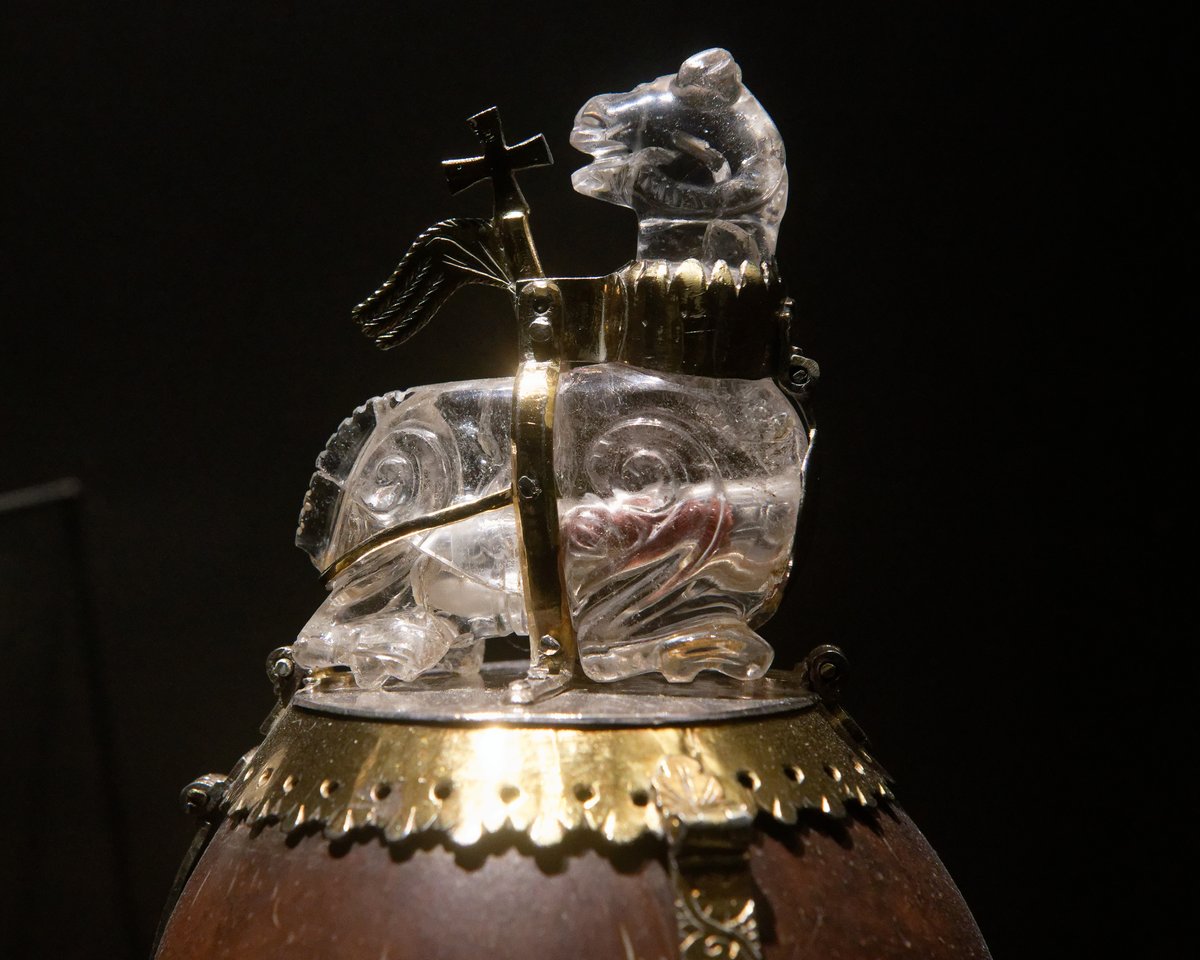
Visiting St.-Paulus-Dom: A Complete Guide for Tourists
Published Date: 19/07/2024
Introduction: Discover the History and Beauty of St.-Paulus-Dom
St.-Paulus-Dom, or St. Paul’s Cathedral, is an iconic landmark nestled in the heart of Münster, Germany. This architectural marvel stands as a testament to the city’s rich historical tapestry and evolving architectural styles. From its humble beginnings as a wooden church established by Charlemagne in 805 AD to its current Gothic splendor, the cathedral has witnessed centuries of religious and cultural transformations. The cathedral’s construction, spearheaded by Bishop Otto II von Lippe in 1225, marked the dawn of a Gothic masterpiece that would take nearly four decades to complete (official website).
Beyond its architectural grandeur, St.-Paulus-Dom is steeped in religious significance, serving as the ecclesiastical center of the Diocese of Münster. It houses the relics of Saint Ludgerus, the city’s patron saint, and features notable elements such as the 16th-century astronomical clock, the serene Gothic cloisters, and the formidable Triumphal Cross Group. The cathedral’s resilience is evident in its post-World War II reconstruction efforts, symbolizing hope and continuity for the people of Münster.
This guide aims to provide a comprehensive overview of St.-Paulus-Dom, covering its historical significance, architectural features, visitor information, and nearby attractions. Whether you are a history aficionado, a devout pilgrim, or a curious traveler, this guide will help you make the most of your visit to one of Germany’s most remarkable cathedrals.
Table of Contents
- Historical Background and Architectural Style
- Visitor Information
- Nearby Attractions
- Accessibility
- Special Events and Guided Tours
- Photographic Spots
- FAQ
- Visit and Stay Up to Date
Historical Background and Architectural Style
The St.-Paulus-Dom, or St. Paul’s Cathedral, in Münster, Germany, is a magnificent testament to centuries of architectural evolution and religious significance. Its history is as rich and layered as its design, reflecting changing styles and enduring faith.
Early Beginnings (805 - 1250)
The story of the cathedral begins in 805 AD with the establishment of the Diocese of Münster by Charlemagne. Liudger, a missionary and the first Bishop of Münster, established a modest wooden church on the site where the cathedral stands today. This marked the beginning of a long and sacred history.
Over the next centuries, the wooden structure was replaced by a series of increasingly grander buildings. Around 1090, Bishop Erpho built a larger Romanesque basilica, reflecting the dominant architectural style of the time. This structure served the growing city for almost two centuries.
The Gothic Masterpiece (1225 - 1264)
The cathedral we see today began to take shape in the mid-13th century. Under the direction of Bishop Otto II von Lippe, construction began on a new Gothic cathedral in 1225. The Gothic style, with its emphasis on height, light, and intricate details, was sweeping across Europe, and Münster’s new cathedral was to be a shining example.
The main construction phase lasted nearly 40 years, culminating in the consecration of the new cathedral in 1264. This remarkable building, with its soaring towers, pointed arches, and ribbed vaults, showcased the innovative spirit of Gothic architecture.
Renaissance and Baroque Influences (16th - 18th Centuries)
While the cathedral’s core structure remained largely unchanged after the Gothic period, subsequent centuries saw the addition of elements reflecting evolving architectural tastes.
The 16th century brought about the construction of the cathedral’s iconic astronomical clock (official website). This intricate marvel, located inside the cathedral, is not just a timepiece but a complex astronomical instrument and a masterpiece of Renaissance craftsmanship.
During the Baroque period in the 17th and 18th centuries, further embellishments were made. Elaborate stucco work, ornate altars, and rich decorations were added to the cathedral’s interior, reflecting the grandeur and opulence characteristic of the Baroque style.
War, Reconstruction, and Renewal (20th Century)
The 20th century brought about significant challenges for St.-Paulus-Dom. During World War II, Münster suffered extensive bombing damage, and the cathedral was not spared. The building endured heavy destruction, particularly to its roof and towers.
However, the people of Münster were determined to rebuild their beloved landmark. Reconstruction efforts began immediately after the war, guided by a commitment to restore the cathedral to its former glory. Using traditional techniques and materials, skilled craftsmen meticulously pieced together the damaged sections, preserving the historical integrity of the building.
The reconstruction of St.-Paulus-Dom was not merely a physical undertaking but a symbol of resilience and hope for the city of Münster. The cathedral’s reopening in 1956 marked a triumphant moment in the city’s post-war recovery.
Architectural Significance
St.-Paulus-Dom stands as a magnificent example of Gothic architecture in Germany, showcasing key elements of the style:
- Pointed Arches: The cathedral’s structure is defined by pointed arches, a hallmark of Gothic architecture. These arches, unlike the rounded arches of the Romanesque period, allowed for greater height and larger windows.
- Ribbed Vaults: The intricate network of ribs that supports the cathedral’s ceiling is another defining feature of Gothic architecture. Ribbed vaults allowed for the creation of higher, more spacious interiors while also distributing weight more effectively.
- Flying Buttresses: These external supports, characteristic of Gothic cathedrals, are visible on the exterior of St.-Paulus-Dom. Flying buttresses helped to stabilize the tall, slender walls of the cathedral, allowing for larger windows and a more open interior.
- Stained Glass Windows: While many of the original stained glass windows were lost during World War II, the cathedral still boasts impressive examples of this art form. Stained glass windows were a key feature of Gothic architecture, flooding the interior with colored light and depicting biblical scenes.
A Blend of Styles
While predominantly Gothic, St.-Paulus-Dom also incorporates elements from other architectural periods, reflecting its long and layered history. The Renaissance astronomical clock and the Baroque interior decorations add further richness and complexity to the building’s design.
Today, St.-Paulus-Dom stands as a symbol of Münster’s enduring spirit and a testament to the artistry and skill of the craftsmen who built and rebuilt it over the centuries. It is a place of worship, a historical treasure, and an architectural marvel that continues to inspire awe and wonder in all who visit.
Visitor Information
Visiting Hours
St.-Paulus-Dom is open to visitors at the following times:
- Monday to Saturday: 9:00 AM - 6:00 PM
- Sunday: 12:00 PM - 6:00 PM
Ticket Prices
Admission to St.-Paulus-Dom is free. However, donations are greatly appreciated to support the upkeep of the cathedral.
Travel Tips
- Best Time to Visit: The cathedral is less crowded in the early morning or late afternoon. Weekdays are generally quieter than weekends.
- How to Get There: The cathedral is located in the heart of Münster. It is easily accessible by public transportation, with several bus and tram stops nearby.
Nearby Attractions
While visiting St.-Paulus-Dom, consider exploring these nearby historical sites in Münster:
- Prinzipalmarkt: A historic marketplace with beautiful buildings and shops.
- Münster Castle: A stunning Baroque palace now housing the University of Münster.
- LWL Museum of Art and Culture: An art museum featuring works from the Middle Ages to contemporary times.
Accessibility
St.-Paulus-Dom is committed to being accessible to all visitors:
- Wheelchair Access: Ramps and elevators are available for wheelchair users.
- Hearing Assistance: Hearing loops are installed to assist visitors with hearing impairments.
Special Events and Guided Tours
Events
The cathedral hosts various events throughout the year, including concerts, religious services, and special exhibitions. Check the cathedral’s official website for a current schedule of events.
Tours
Guided tours are available for those who wish to learn more about the cathedral’s history and architecture. Tours can be booked through the cathedral’s official website.
Photographic Spots
Capture the beauty of St.-Paulus-Dom from these vantage points:
- Cathedral Square: A great spot to photograph the cathedral’s facade and towers.
- Interior Views: The nave and the astronomical clock make for stunning interior shots.
- Bell Tower: For a panoramic view of Münster, climb the bell tower (check accessibility).
FAQ
What are the visiting hours for St.-Paulus-Dom?
The cathedral is open Monday to Saturday from 9:00 AM to 6:00 PM, and on Sunday from 12:00 PM to 6:00 PM.
How much are tickets for St.-Paulus-Dom?
Admission is free, but donations are appreciated.
Is St.-Paulus-Dom wheelchair accessible?
Yes, ramps and elevators are available for wheelchair users.
Are guided tours available?
Yes, guided tours can be booked through the cathedral’s official website.
Visit and Stay Up to Date
Plan your visit to St.-Paulus-Dom and explore the rich history and architectural beauty of Münster. For more information, download the mobile app Audiala, check out other related posts, or follow us on social media for the latest updates.
Conclusion: Key Takeaways from Your Visit to St.-Paulus-Dom
St.-Paulus-Dom in Münster is not just a cathedral; it is an enduring symbol of faith, resilience, and artistic achievement. Its blend of Gothic, Renaissance, and Baroque elements narrates a story of architectural evolution and religious devotion spanning over a millennium. From its early days as a modest wooden church to its current status as a Gothic masterpiece, the cathedral has continually adapted while preserving its historical essence (official website).
Visitors to St.-Paulus-Dom can marvel at its towering spires, intricate stained glass windows, and the awe-inspiring astronomical clock. The cathedral is accessible to all, offering ramps and elevators for wheelchair users, and hosts a variety of events and guided tours to enrich your experience. Nearby attractions such as the Prinzipalmarkt and Münster Castle further enhance your visit, providing a deeper connection to the city’s rich cultural heritage.
By exploring St.-Paulus-Dom, you are not just witnessing an architectural wonder; you are engaging with a living monument that continues to inspire and unite people from all walks of life. Whether you are drawn by its historical significance, architectural beauty, or spiritual allure, a visit to St.-Paulus-Dom promises to be a profoundly enriching experience.
Sources and Further Reading
- Visiting St.-Paulus-Dom in Münster - History, Tickets, and Travel Tips, 2024, Author https://www.paulusdom.de/
- Exploring St.-Paulus-Dom - Visiting Hours, Tickets, and Historical Significance in Münster, 2024, Author https://www.paulusdom.de/dom/ausstattung/details/astronomische-uhr/
- Complete Visitor Guide to St.-Paulus-Dom in Münster - Hours, Tickets, and Nearby Attractions, 2024, Author https://www.paulusdom.de/
